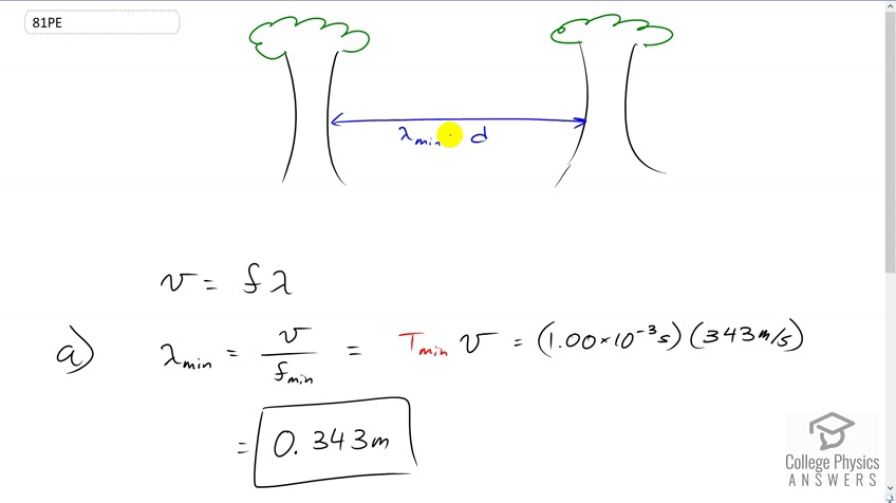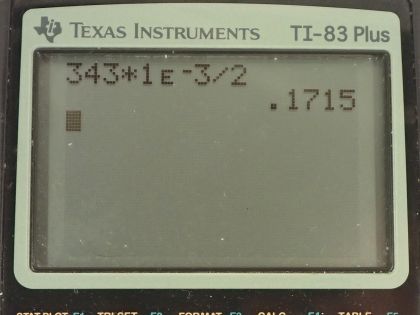- Since doors are wider than 17 cm, this does not explain why bats have a difficult time finding the door to exit a house.
Note: The video needs to be re-done. The final answer written above is correct, and so is the calculator screenshot, but the video made the incorrect assumption that resolution was limited to the wavelength, as it is approximately when using a microscope, for example.
Solution video
OpenStax College Physics, Chapter 17, Problem 81 (Problems & Exercises)

Calculator Screenshots
Comments
Hello,
I am wondering why the answer is not divided by 2 in this problem since it is an echo that bounces back to the source. In a previous solution for this chapter (#9 I believe) the question has nearly identical wording and structure, but in that problem the solution is divided by two to account for the fact that the sound wave is reflected. I have copied the problem here for convenience: 9. (a) If a submarine’s sonar can measure echo times with a precision of 0.0100 s, what is the smallest difference in distances it can detect? (Assume that the submarine is in the ocean, not in fresh water.)
That solution involves using the equation to solve for d, however if I use that same method for this problem I get an answer that is 1/2x the correct value. Is there something I am missing in the wording of these two questions?
Thanks!
Hello ts,
Thank you so much for this question. You've uncovered an error! The answer should be divided by 2, as you suggested. I was working with a different (and incorrect) point of view where the resolution was approximately limited to the wavelength, as it is with a microscope. From p. 1312 in chapter 29, the text says "Resolution, or observable detail, is limited to about one wavelength.", but that doesn't really apply here since the bat is using a linear back-and-forth echolocation, not a diffraction limited scenario of a wave passing through an aperture (the door, from this perspective).
I have corrected the final answer and updated the calculator screenshot. I'll replace the video after I've completed all of the remaining even numbered solutions.
All the best,
Shaun


